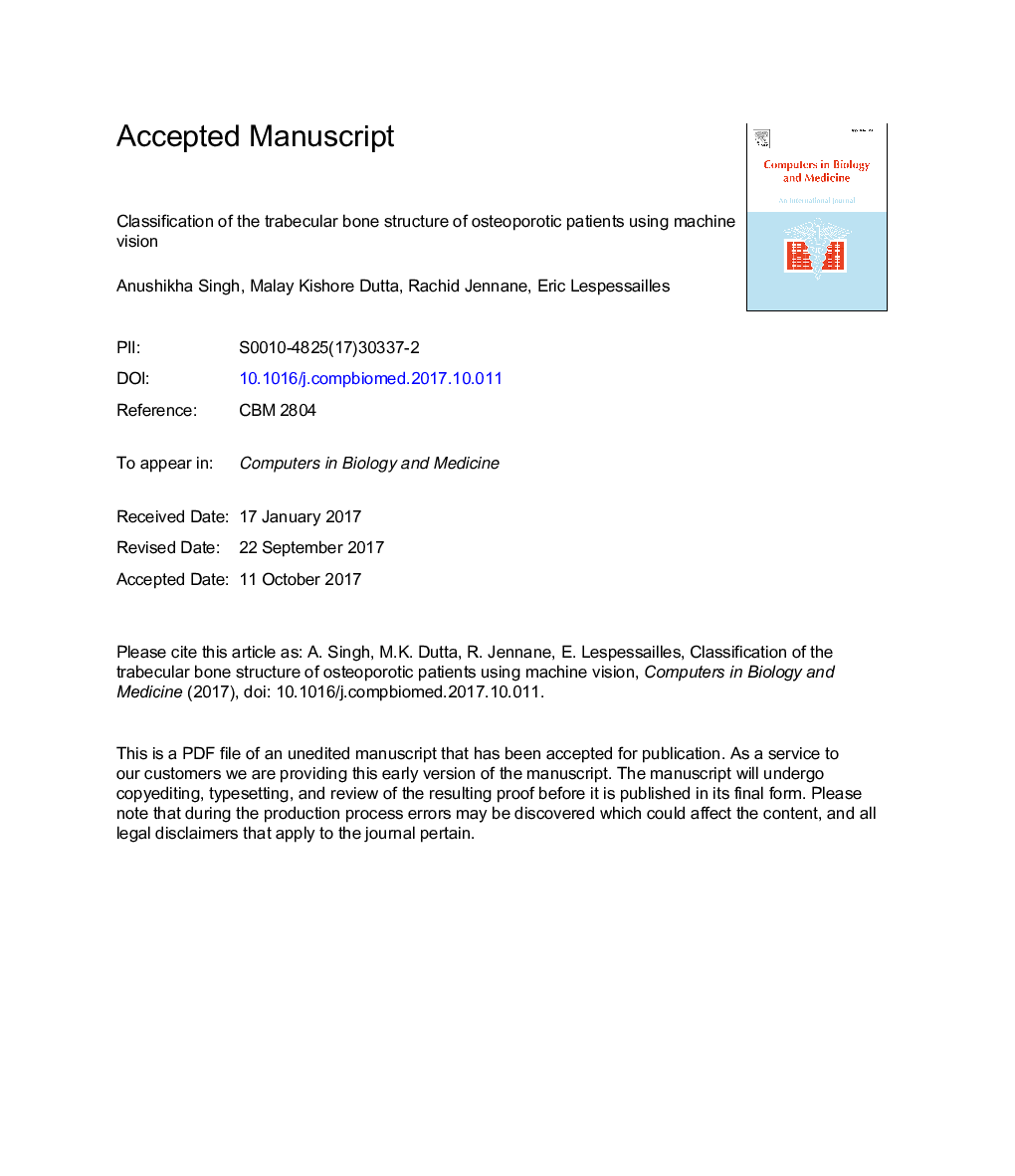| Article ID | Journal | Published Year | Pages | File Type |
|---|---|---|---|---|
| 6920713 | Computers in Biology and Medicine | 2017 | 22 Pages |
Abstract
Osteoporosis is a common bone disease which often leads to fractures. Clinically, the major challenge for the automatic diagnosis of osteoporosis is the complex architecture of bones. The clinical diagnosis of osteoporosis is conventionally done using Dual-energy X-ray Absorptiometry (DXA). This method has specific limitations, however, such as the large size of the instrument, a relatively high cost and limited availability. The method proposed here is based on the automatic processing of X-ray images. The bone X-ray image was statistically processed and strategically reformed to extract discriminatory statistical features of different orders. These features were used for machine learning for the classification of two populations composed of osteoporotic and healthy subjects. Four classifiers - support vector machine (SVM), k-nearest neighbors, Naïve Bayes and artificial neural network - were used to test the performance of the proposed method. Tests were performed on X-ray images of the calcaneus bone collected from the hospital of Orleans. The results are significant in terms of accuracy and time complexity. Experimental results indicate a classification rate of 98% using an SVM classifier which is encouraging for automatic osteoporosis diagnosis using bone X-ray images. The low time complexity of the proposed method makes it suitable for real time applications.
Related Topics
Physical Sciences and Engineering
Computer Science
Computer Science Applications
Authors
Anushikha Singh, Malay Kishore Dutta, Rachid Jennane, Eric Lespessailles,
